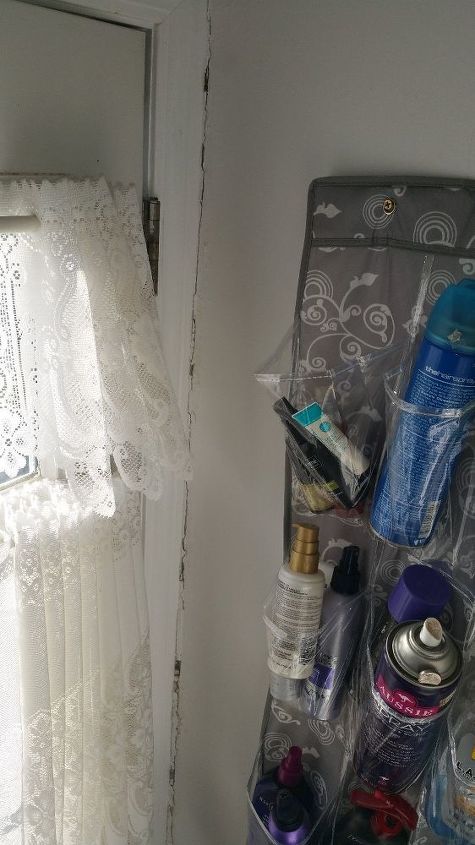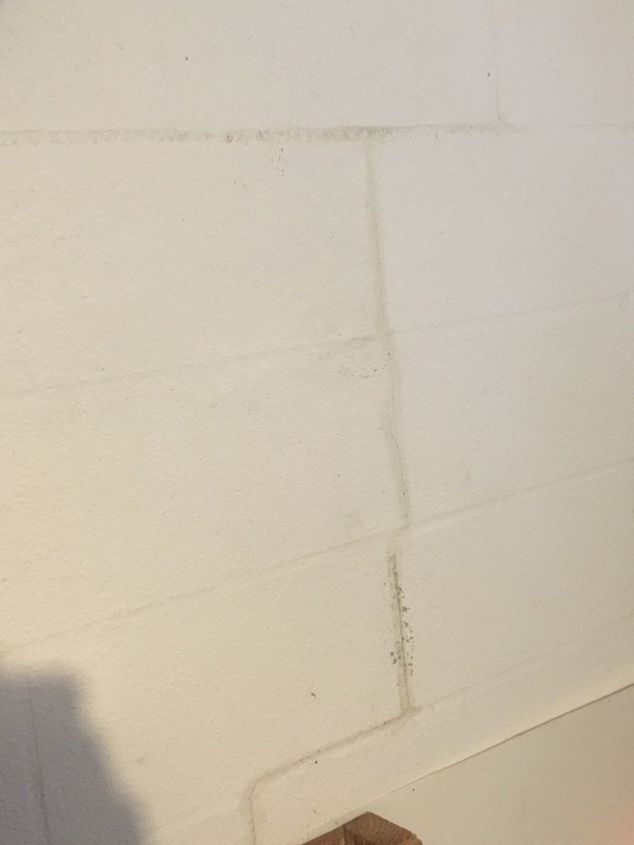What do these cracks mean?

-
The house is shifting and causing the cracks. Houses naturally shift, some more than others. Also, depending when the house was built and what materials were used, and on what type of terrain is sits on, it may shift more than today's structures. There are multiple factors that come into play. You say they are "all of a sudden getting worse," however since you live in Michigan and just finished the winter season with lots of temperature/moisture changes, the cracking you see could be a direct result of the climate during the winter months. Plus, some of the cracks were probably there and simply became more pronounced because of cooling/heating during the winter. Mother Nature can cause all manner of things to happen. The cracks you are showing are at places where cracks are most likely to occur. If you are concerned about the stability/safety of the dwelling, you might have a structural engineer inspect it. I'm not trying to be alarmist here, but you seem a bit concerned so having it checked out would give you an explanation and piece of mind.
 Swan Road Designs
on Jun 07, 2015
Helpful Reply
Swan Road Designs
on Jun 07, 2015
Helpful Reply -
-
Did you have a lot of rain recently? If so, then the house id shifting more then usually.
 Heliane Ripley
on Jun 07, 2015
Helpful Reply
Heliane Ripley
on Jun 07, 2015
Helpful Reply -
-
Sometimes the cracks expand and contract with hot and cold weather. Our window trim does this.
 Darla
on Jun 07, 2015
Helpful Reply
Darla
on Jun 07, 2015
Helpful Reply -
-
Get someone in to check the foundation. It may be shifting. Soil under the house can be leaching away. A good foundation repair specialist can reinforce it.
 Arts Be Crafty
on Jun 07, 2015
Helpful Reply
Arts Be Crafty
on Jun 07, 2015
Helpful Reply -
-
You mention your aunt's house is old. Are the walls drywall or plaster? The hairline cracks look like normal settling/seasonal expansion. The one along the doorway looks like it could be a different issue. Does the door stick when you open/close it? Another reason I ask about the age of the house is because if it's plaster and there are wood laths behind it, it could be a costlier problem.
 Mandy Brown
on Jun 08, 2015
Helpful Reply
Mandy Brown
on Jun 08, 2015
Helpful Reply -
-
Upstairs usually indicates structural problems. Downstairs usually indicates foundation problems. Per a structural engineer recently. You might check for termites in the support beams upstairs etc.
 Elwanna
on Jun 08, 2015
Helpful Reply
Elwanna
on Jun 08, 2015
Helpful Reply -
-
NAH....its cracked due to faulty work...if the foundation moved it would be on your walls also...devened ceiling joists and verticals beams. Usually (I would have to see it) its not a good bond between window and wall...the door header may have shrunk due to dryness and moved....IF the wall was re-sheetrocked...it may be bad tapping...if plaster re-do...may be faulty mixed plaster...WAS THI FIXED AND THIS HAPPENED? re post any of these questions.
 Omniman
on Jun 08, 2015
Helpful Reply
Omniman
on Jun 08, 2015
Helpful Reply -
-
Hello fellow Michigander. Aunt's house is old farmhouse(100+) probably built on a "Michigan" basement ie. rubble and cement. Both the basement and the house shift with the huge seasonal frost/freeze cycles in the ground. Those "cracks" are tears in the drywall tape. You or aunt can do a repair with modern more flexible drywall mesh tape.
 Sue c.
on Jun 08, 2015
Helpful Reply
Sue c.
on Jun 08, 2015
Helpful Reply -
-
Thanks everyone for weighing in. Apparently the roof was leaking badly in the kitchen which is directly underneath where the cracks are upstairs. The whole wall got replaced I guess. I notice cracks along the kitchen too. Is it water damage again due to faulty repair?
 Audra Bailey
on Jun 08, 2015
Helpful Reply
Audra Bailey
on Jun 08, 2015
Helpful Reply -
-
She doesn't know much about the house lol so I'm not sure how old it is. It has a regular basement tho, no mi one. I think it is plaster not drywall and no the door doesn't stick.
 Audra Bailey
on Jun 08, 2015
Helpful Reply
Audra Bailey
on Jun 08, 2015
Helpful Reply -
-
Looks like a bad tape job to me, you never cut your sheet rock up from the corner of the door, always make your sheetrock seam in the middle over the top of a doorway. Learned that little nugget from my carpenter!
 Kathy Cummings Huffman
on Jun 08, 2015
Helpful Reply
Kathy Cummings Huffman
on Jun 08, 2015
Helpful Reply -
-
Just a little "settling" could cause this. A plaster repair by using plaster knife along edger of crack to leave a slight gap, to take stress off that area, then add a little plaster with a trowel so can top with the drywall tape that has holes in it then top with more plaster and do as smoothly as can. Let dry then if sinks in a little may have to do another swipe of plaster. Let this dry and then sand smooth. Cover with primer and then repaint. Kathy has the right idea about where seams should be in original laying of drywall.
Sue Sanders on Jun 10, 2015
Helpful Reply -
-
A painter at my mother's house used caulking instead of drywall compound, and the repair lasted longer because it was flexible. It would crack every so often, She lived on a busy street with big trucks driving by, which didn't seem to help. As @sue c. stated the frost/freeze cycle cause shifting.
 B. Enne
on Jun 10, 2015
Helpful Reply
B. Enne
on Jun 10, 2015
Helpful Reply -
-
It's hard to see in the pictures but it's literally cracking all around the ceiling seams, every door frame and window frame. It looks like you could just pull the ceiling off if you wanted. This is normal?
 Audra Bailey
on Jun 11, 2015
Helpful Reply
Audra Bailey
on Jun 11, 2015
Helpful Reply -
-
We had cracks develop and ended up jacking up the SE corner of the house. It had settled over the years (30) just under 1/4 inch. It is costly,(13,000) but works and Heliotech gives a life time warrenty.
 DORLIS
on Jun 16, 2015
Helpful Reply
DORLIS
on Jun 16, 2015
Helpful Reply -
-
Old houses will expand and contract with the seasons, I've been told; also found it to be true of my own. As long as there is no mold or dampness, it is just aesthetic. Fix it as Sue Sanders says. See what it does in the Fall and Winter when humidity is low.
 Gail
on Jun 27, 2015
Helpful Reply
Gail
on Jun 27, 2015
Helpful Reply -
-
Major step. First check soundness of foundations, wall joist and ceiling timbers. Check for sinking foundations. If any jack them up and pack to original heights, Then decide, is the problem shrinking sheets and panels or expansion contraction between parts, On sheet joins repair first with plasterers tape before plastering over the crack this will bond the joint and prevent movement Where plaster/drywall meets wood or brick then flexible (paintable) silicone is the answer. ALL else fails the panelling and possibly the whole interior lining, boards and all should be replaced
 Brad Mildern
on Aug 25, 2016
Helpful Reply
Brad Mildern
on Aug 25, 2016
Helpful Reply -
Related Discussions
How to get rid of mice?
We seem to have some unwelcome Mickeys and Minnies in our house. What is the best way to get rid of them?
How to remove popcorn ceiling with asbestos?
I want to remove my popcorn ceiling, but it has asbestos in it. How do I go about this safely?
How to caulk baseboard gaps?
How do I fill gaps at baseboard, should I caulk? If so, does anyone know how to caulk baseboards?
How to fix squeaky hardwood floors?
How do I fix squeaky hardwood floors?
We have a crack in our vaulted ceiling. What to do?
The seam tape is visible . The ceiling has a pattern that we would like not to disturb. A professional tried to fix it years ago
Cracks in stucco - what to do?
Good Morning,My wife and I purchased our very first home in June of 2008 in Dade City, FL. It was our dream home and we planned on growing old together in it.Very soo... See more








